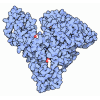Entry Database : PDB / ID : 4uddTitle GR in complex with desisobutyrylciclesonide GLUCOCORTICOID RECEPTOR NUCLEAR RECEPTOR COACTIVATOR 2 Keywords / / / Function / homology Function Domain/homology Component
/ / / / / / / / / / / / / / / / / / / / / / / / / / / / / / / / / / / / / / / / / / / / / / / / / / / / / / / / / / / / / / / / / / / / / / / / / / / / / / / / / / / / / / / / / / / / / / / / / / / / / / / / / / / / / / / / / / / / / / / / / / / / / / / / / / / / / / / / / / / / / / / / / / / / / / / / / / / / / / / / / / Biological species HOMO SAPIENS (human)Method / / / Resolution : 1.8 Å Authors Edman, K. / Hogner, A. / Hussein, A. / Bjursell, M. / Aagaard, A. / Backstrom, S. / Bodin, C. / Wissler, L. / Jellesmark-Jensen, T. / Cavallin, A. ...Edman, K. / Hogner, A. / Hussein, A. / Bjursell, M. / Aagaard, A. / Backstrom, S. / Bodin, C. / Wissler, L. / Jellesmark-Jensen, T. / Cavallin, A. / Karlsson, U. / Nilsson, E. / Lecina, D. / Takahashi, R. / Grebner, C. / Lepisto, M. / Guallar, V. Journal : Structure / Year : 2015Title : Ligand Binding Mechanism in Steroid Receptors: From Conserved Plasticity to Differential Evolutionary Constraints.Authors: Edman, K. / Hosseini, A. / Bjursell, M.K. / Aagaard, A. / Wissler, L. / Gunnarsson, A. / Kaminski, T. / Kohler, C. / Backstrom, S. / Jensen, T.J. / Cavallin, A. / Karlsson, U. / Nilsson, E. ... Authors : Edman, K. / Hosseini, A. / Bjursell, M.K. / Aagaard, A. / Wissler, L. / Gunnarsson, A. / Kaminski, T. / Kohler, C. / Backstrom, S. / Jensen, T.J. / Cavallin, A. / Karlsson, U. / Nilsson, E. / Lecina, D. / Takahashi, R. / Grebner, C. / Geschwindner, S. / Lepisto, M. / Hogner, A.C. / Guallar, V. History Deposition Dec 9, 2014 Deposition site / Processing site Revision 1.0 Nov 25, 2015 Provider / Type Revision 1.1 Dec 9, 2015 Group Revision 1.2 Dec 16, 2015 Group Revision 1.3 Sep 27, 2017 Group / Category / Item Revision 1.4 Apr 3, 2019 Group / Source and taxonomy / Category / Item Revision 1.5 Dec 20, 2023 Group Data collection / Database references ... Data collection / Database references / Derived calculations / Other / Refinement description Category chem_comp_atom / chem_comp_bond ... chem_comp_atom / chem_comp_bond / database_2 / pdbx_database_status / pdbx_initial_refinement_model / struct_site Item _database_2.pdbx_DOI / _database_2.pdbx_database_accession ... _database_2.pdbx_DOI / _database_2.pdbx_database_accession / _pdbx_database_status.status_code_sf / _struct_site.pdbx_auth_asym_id / _struct_site.pdbx_auth_comp_id / _struct_site.pdbx_auth_seq_id
Show all Show less
 Open data
Open data Basic information
Basic information Components
Components Keywords
Keywords Function and homology information
Function and homology information HOMO SAPIENS (human)
HOMO SAPIENS (human) X-RAY DIFFRACTION /
X-RAY DIFFRACTION /  SYNCHROTRON /
SYNCHROTRON /  MOLECULAR REPLACEMENT / Resolution: 1.8 Å
MOLECULAR REPLACEMENT / Resolution: 1.8 Å  Authors
Authors Citation
Citation Journal: Structure / Year: 2015
Journal: Structure / Year: 2015 Structure visualization
Structure visualization Molmil
Molmil Jmol/JSmol
Jmol/JSmol Downloads & links
Downloads & links Download
Download 4udd.cif.gz
4udd.cif.gz PDBx/mmCIF format
PDBx/mmCIF format pdb4udd.ent.gz
pdb4udd.ent.gz PDB format
PDB format 4udd.json.gz
4udd.json.gz PDBx/mmJSON format
PDBx/mmJSON format Other downloads
Other downloads https://data.pdbj.org/pub/pdb/validation_reports/ud/4udd
https://data.pdbj.org/pub/pdb/validation_reports/ud/4udd ftp://data.pdbj.org/pub/pdb/validation_reports/ud/4udd
ftp://data.pdbj.org/pub/pdb/validation_reports/ud/4udd



 Links
Links Assembly
Assembly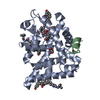
 Components
Components HOMO SAPIENS (human) / Plasmid: PFASTBAC1 / Cell line (production host): High Five / Production host:
HOMO SAPIENS (human) / Plasmid: PFASTBAC1 / Cell line (production host): High Five / Production host:  TRICHOPLUSIA NI (cabbage looper) / References: UniProt: P04150
TRICHOPLUSIA NI (cabbage looper) / References: UniProt: P04150 HOMO SAPIENS (human) / References: UniProt: Q15596
HOMO SAPIENS (human) / References: UniProt: Q15596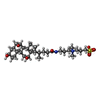
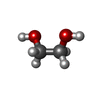
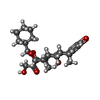




 X-RAY DIFFRACTION / Number of used crystals: 1
X-RAY DIFFRACTION / Number of used crystals: 1  Sample preparation
Sample preparation SYNCHROTRON / Site:
SYNCHROTRON / Site:  ESRF
ESRF  / Beamline: ID29 / Wavelength: 0.98
/ Beamline: ID29 / Wavelength: 0.98  Processing
Processing MOLECULAR REPLACEMENT
MOLECULAR REPLACEMENT Movie
Movie Controller
Controller



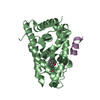
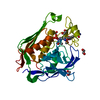








 PDBj
PDBj








